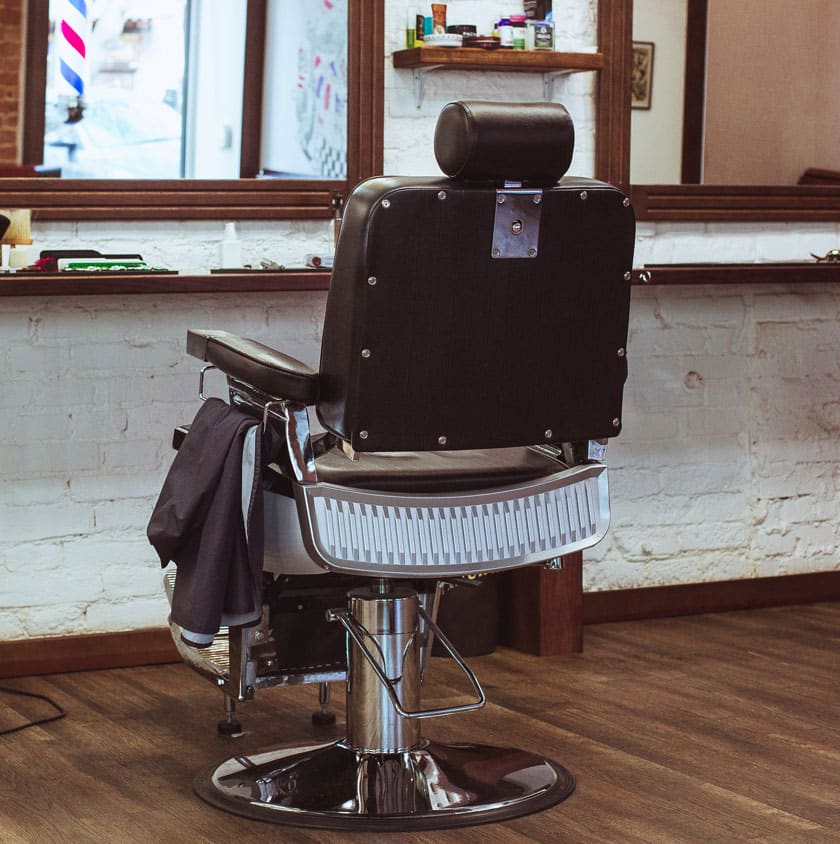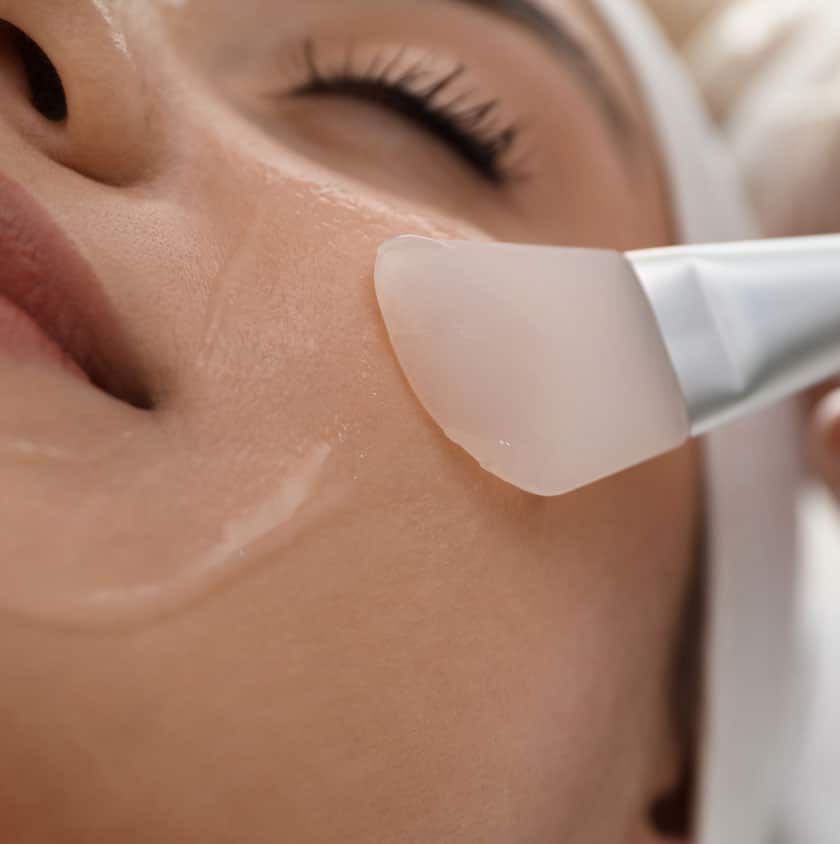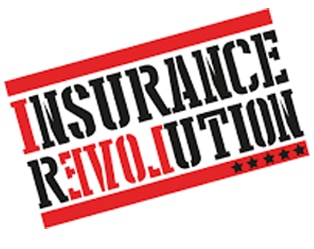
Salon Insurance
Compare Salon Insurance Quotes
- Complete a short form
- Quickly compare quotes
- Find a great deal today

Compare insurance quotes from top UK salon insurers including;
Why Compare Salon Insurance Quotes at SimplyQuote.co.uk?
Comparing salon insurance at SimplyQuote helps you find tailored cover at a competitive price by accessing multiple quotes through our trusted partnership with Quotezone.
It’s quick, convenient, and ensures your business is properly protected—without overpaying.
When you run a salon, you’re not just styling hair or offering treatments—you’re managing staff, welcoming clients, and handling high-value equipment. Any of these can create risk. Insurance protects you, but policies vary. One insurer might focus on treatment cover, another on business interruption. Without comparing options, it’s easy to end up underinsured or paying for extras you don’t need.
That’s why we work with Quotezone, one of the UK’s leading comparison platforms. Through our partnership, you can view tailored quotes from a wide panel of trusted insurers—by filling out just one form. This removes the need to contact multiple providers individually and gives you a clearer picture of what’s available.
Whether you’re a sole trader offering mobile services or running a busy high street salon, comparing policies helps ensure your insurance fits your business—not just the industry average.
What Do I Need To Get A Quote?
To get a salon insurance quote, you’ll need to provide basic business details such as the treatments you offer, your salon type, and whether you employ staff.
These questions help insurers tailor cover to your exact setup.
You don’t need to gather piles of paperwork—just have a few key facts ready. Start with your business name, postcode, and the type of salon you run. Are you a hairdresser, a beautician, or offering both? Do you work from home, rent a chair, or run a commercial premises? These details help match you with policies that fit your environment.
Next, insurers typically ask about:
- Treatments offered – Certain treatments (like chemical peels or laser therapy) may affect risk levels.
- Number of employees – This determines whether employer’s liability cover is needed.
- Your annual turnover – Used to assess the scale of your business for public liability and business interruption cover.
- Equipment and stock value – Important if you want contents or equipment insurance included.
If you’re unsure on anything, the smart form helps guide you through the process. You can complete it in minutes—without needing to call around or speak to an advisor.
Do I Need Salon Insurance If I Rent A Chair?
Yes—if you’re self-employed and rent a chair, you’ll usually need your own salon insurance.
The salon’s insurance may not cover you for treatment mistakes, personal liability, or damage to your tools.
This setup is increasingly common—especially in hairdressing and beauty therapy. But legally and financially, you’re still operating as an independent business. That means if a client claims against you for a treatment gone wrong, you could be personally liable unless you have your own public liability and treatment risk cover.
Your own policy can also cover things like your kit, stock, or lost earnings if something goes wrong and you can’t work. And because you’re not running a full salon, premiums for chair renters or room sharers tend to be lower than for full business owners.
It’s affordable, and more importantly, it puts the responsibility—and the protection—in your own hands.

Why Do I Need Salon Insurance Cover?
Salon insurance protects you financially if a client is injured, a treatment goes wrong, or your equipment is damaged or stolen.
It gives you a safety net—so one unexpected incident doesn’t become a business-ending cost.
Things go wrong in salons, even when you’re careful. A customer trips on a loose wire. A colouring treatment triggers an allergic reaction. A stylist accidentally knocks hot wax onto a handbag. If a claim follows and you’re uninsured, you could be liable for thousands in compensation and legal fees.
That’s where public liability insurance steps in—one of the key covers included in most salon insurance policies. If you employ staff, employer’s liability cover is legally required, protecting you if an employee gets hurt at work. Without it, you could face prosecution and unlimited fines.
Mobile and freelance professionals aren’t exempt from risk either. A self-employed lash technician working from home can still be sued if a client suffers harm during a treatment. And without contents insurance, stolen tools could mean missed appointments and lost income.
Are All Salon Treatments Covered By Insurance?
Not all treatments are automatically covered—especially those considered high risk or specialist.
You’ll need to declare every treatment you offer when applying for salon insurance to make sure you’re protected.
Most insurers will include common procedures like hair colouring, waxing, manicures, facials, and basic massage therapies under treatment risk cover. But once you start offering more advanced services—such as laser therapy, chemical peels, microblading, injectables, or body sculpting—the risk profile changes. These often require higher levels of cover, evidence of qualifications, or even standalone treatment-specific insurance.
If you fail to declare a treatment and a claim arises from it, your insurer may refuse to pay out. That’s why it’s essential to be completely transparent when getting your quote.
For example, a salon that expands into offering semi-permanent makeup may need to update its policy, even if everything else stays the same. Keeping your cover in step with your services is key to avoiding gaps that could cost you thousands.

What Does Salon Insurance Cover Include?
Salon insurance typically includes public liability cover, treatment risk, employer’s liability, and protection for your equipment and contents.
Most policies are flexible and can be tailored to your salon’s size, treatments, and setup. Here’s how each of the core covers works in practice:
- Public liability insurance covers claims if a customer or member of the public is injured or their property is damaged while at your salon. If someone slips on a wet floor or reacts to a patch test, this cover helps with legal fees and compensation costs.
- Treatment risk cover protects you if a client has an adverse reaction to a beauty treatment. Not all public liability policies automatically include this, so it’s essential for salons offering services like waxing, facials, or chemical hair treatments.
- Employer’s liability insurance is a legal requirement if you employ staff. It covers you if an employee becomes ill or is injured at work—even if they’re part-time or temporary.
- Contents and equipment insurance protects your tools, stock, and furnishings against theft, accidental damage, or fire. This is especially valuable for salons with high-value electricals or specialist beauty devices.
- Business interruption cover can also be added to some policies. If an insured event (like a fire or flood) forces you to temporarily close, this can help cover lost income during downtime.
Whether you run a hair salon, nail bar, or mobile treatment business, most policies allow you to pick and choose cover types to match your needs—keeping costs proportionate without leaving you exposed.
What Types Of Professionals & Services Qualify For Salon Insurance?
Salon insurance can cover a wide range of professionals, from traditional high street salons to self-employed therapists working from home or on the move.
If you provide treatments or services within the health, beauty, or grooming space, there’s likely a policy that fits your setup.
Here are some of the most common professionals who can get salon insurance:
- Hairdressers and barbers – Whether operating in a salon or renting a chair
- Beauticians and skincare therapists – Offering facials, peels, and advanced skincare
- Nail technicians – Working from salons, mobile setups, or home studios
- Massage therapists – Including Swedish, deep tissue, or specialist massage
- Makeup artists – Bridal, editorial, or event-focused
- Eyelash and brow technicians – Including lash lifts, tinting, and microblading
- Tanning salons – Spray tanning or UV tanning services
- Aesthetic practitioners – Providing non-invasive treatments (e.g. Botox, fillers—often requiring specialist cover)
- Mobile salon professionals – Those working at clients’ homes or on location
- Home-based salon owners – Running treatment rooms or studios from a private residence
You don’t have to own a premises to be insured. In fact, many policies are designed for freelancers, chair renters, and part-time professionals. What matters is that you’re upfront about your services and setup during the quote process—so your cover matches your risk.

What’s Not Included?
Salon insurance policies usually exclude general wear and tear, treatment risks not disclosed to the insurer, and claims arising from working outside the terms of your policy.
While cover can be comprehensive, it’s not unlimited.
It’s important to understand what your policy won’t pay out for. For instance, if a client receives a treatment that wasn’t listed when you arranged your insurance—and it leads to a claim—it may not be covered. The same goes for using unlicensed products or untrained staff.
Most policies will also exclude:
- General wear and tear – such as gradual damage to salon chairs, flooring, or décor
- Intentional or illegal acts – any injury or damage caused deliberately or through criminal activity
- Unattended property – theft from vehicles left unlocked, or equipment left in insecure premises overnight
- Business interruption from pandemics – unless specifically stated (many insurers excluded COVID-19-related disruption post-2020)
Exclusions exist to protect insurers from unpredictable or unmanageable risks—but that doesn’t mean you’re left vulnerable. The key is to read the policy wording carefully and disclose everything accurately during your application.
If you’re unsure what’s included and what’s not, comparing quotes and checking policy summaries can help you avoid surprises later.
How Much Does Salon Insurance Cost?
Salon insurance typically starts from around £6 to £10 per month for basic cover, but costs vary widely depending on the size, services, and risks of your business.
Larger salons or those offering advanced treatments can expect to pay more.
There’s no one-size-fits-all price tag. A self-employed mobile nail technician working part-time may only need minimal cover—perhaps just public liability insurance and contents protection. That’s going to cost far less than a high-street beauty salon employing five staff and offering laser treatments.
Here’s what insurers usually consider when calculating your premium:
- Business type and treatments offered – Riskier treatments (like chemical peels or IPL) push costs up
- Number of employees – More staff means employer’s liability is required, which increases the premium
- Annual turnover – Often used as a proxy for business size
- Location – High-crime areas may attract higher theft risk ratings
- Claims history – If you’ve claimed before, premiums may be higher
- Level of cover – Higher public liability limits or contents values raise the premium
Expect to pay more if your business offers advanced services, holds expensive equipment, or needs higher limits of liability. The best way to get an accurate idea of cost is to compare quotes that reflect your actual setup.
How Can I Save Money On Salon Insurance?
You can reduce the cost of salon insurance by comparing quotes, tailoring your cover, and showing insurers you run a low-risk business.
A few practical changes can make your policy more affordable—without compromising protection.
Here are some of the most effective ways to keep your premium down:
- Only pay for what you need – Don’t include cover you’re not legally required to hold. For example, if you work alone, you likely don’t need employer’s liability.
- Adjust your excess – Increasing the voluntary excess (what you pay if you make a claim) can reduce your overall premium—just make sure it’s still manageable.
- Limit your treatment risks – High-risk procedures like chemical peels can raise premiums. Be honest about your treatments, and avoid listing unnecessary extras.
- Improve salon safety – Using patch tests, keeping walkways clear, and training staff properly reduces claims—and can lead to lower premiums over time.
- Avoid auto-renewing – Prices change each year. Comparing policies regularly helps make sure you’re still getting good value.
It’s not always about cutting corners—it’s about cutting waste. And by comparing quotes through SimplyQuote, you can quickly see what’s essential and what you can skip.
How To Compare Salon Insurance Quotes At SimplyQuote.co.uk
You can compare salon insurance quotes at simplyquote.co.uk in just a few minutes by completing one smart form powered by our trusted partner, Quotezone.
It’s quick, secure, and helps you find tailored cover that suits your salon—without the admin headache.
The process is straightforward:
- Tell us about your business – You’ll be asked for a few key details: your salon type, treatments offered, staff count, and business location.
- Select the cover you need – You’ll choose the types of insurance relevant to you, such as public liability, treatment risk, or employer’s liability.
- Review your personalised quotes – Based on your details, you’ll be shown tailored offers from a panel of FCA-regulated UK insurers.
- Pick the policy that fits – Compare cover levels, prices, and excesses side-by-side to choose the one that’s right for your business.
There’s no pressure to buy straight away. The goal is to give you a clear, hassle-free way to understand your options—so you can choose protection that makes sense, not just tick a box.
By working with Quotezone, SimplyQuote ensures you get access to a wide market of providers without needing to contact each one individually. It saves time, reduces risk, and helps you avoid paying for cover you don’t need.
Frequently Asked Questions
Only employer’s liability insurance is legally required—if you employ staff. Other types, like public liability or treatment risk, aren’t mandatory but are strongly recommended.
Yes. Many policies can be tailored for mobile professionals or freelancers working from home or visiting clients.
If you don’t list all treatments during your quote, you may not be covered if a claim arises from one of them. Always be accurate and complete.
Not always. It’s usually included, but some basic policies may exclude it or offer it as an optional add-on. Always check the summary before buying.
Most salons opt for £1 million to £5 million. If you rent a chair or work in public-facing spaces, it’s worth considering higher limits.
Many insurers do offer monthly payment options, often with interest. Always check whether there are additional costs for paying this way.
Only if you add contents or equipment cover. Be sure to estimate the full replacement cost of your tools to ensure you’re fully protected.
That’s fine—just make sure you disclose all the services and treatments you offer when getting a quote. Most insurers cover mixed-use salons.
Written by Chris Richards
Page last reviewed on 26th March 2025 by Chris Richards

